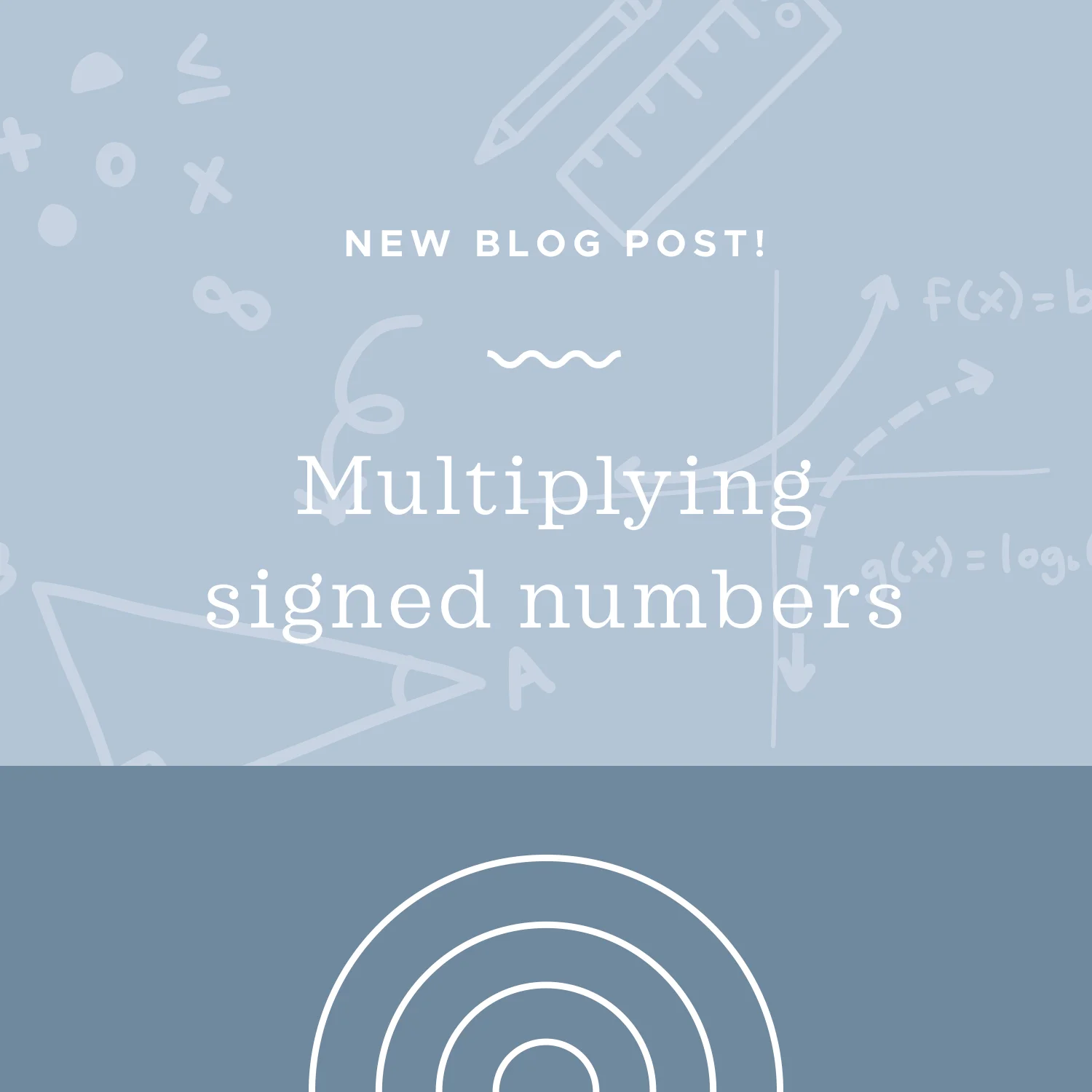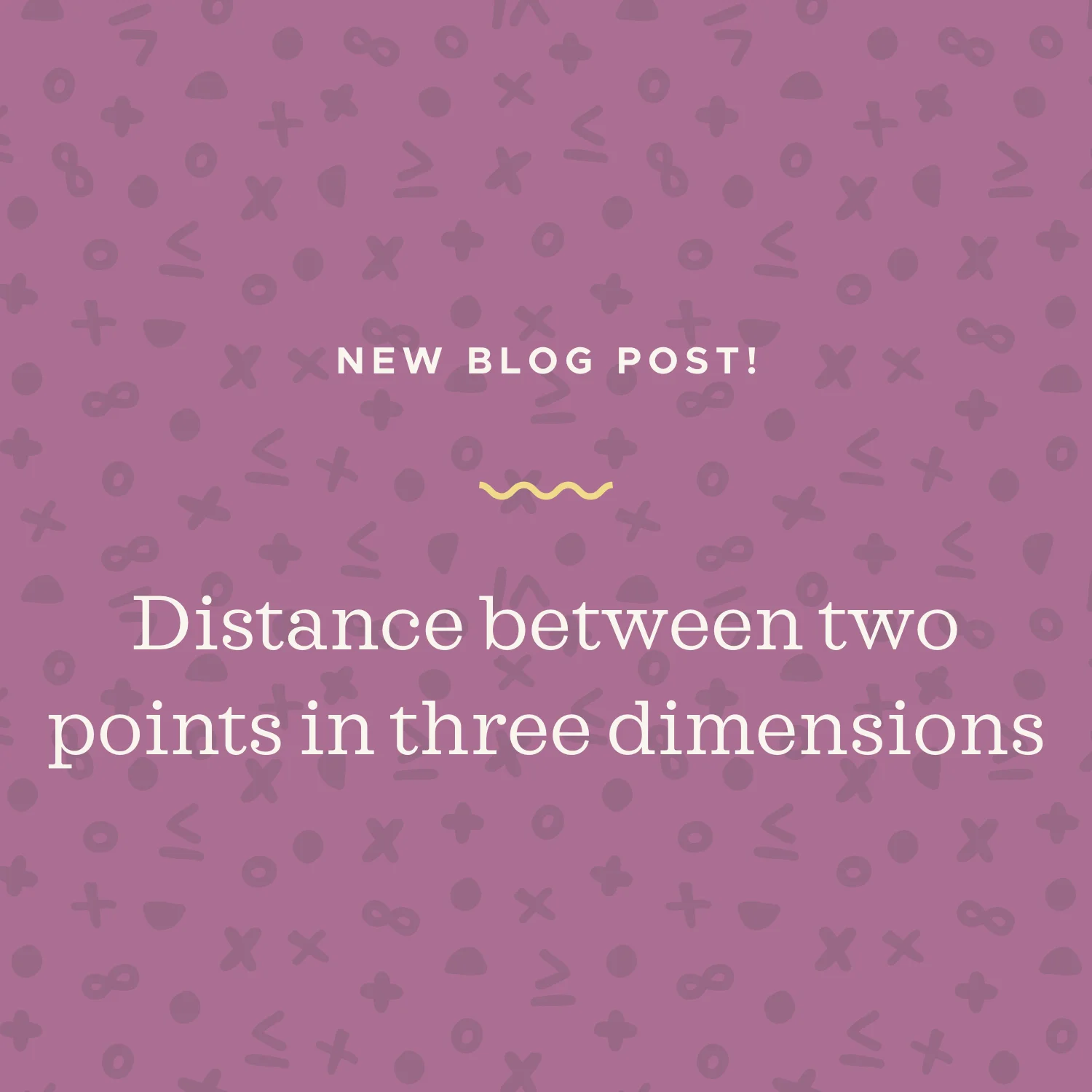Unit multipliers are what we use to convert one set of units to another. A really easy example is using a unit multiplier to convert feet to inches. We’ll be multiplying by fractions, remembering to put on the top (the numerator) the units we want to keep, and we put on the bottom (the denominator) the units we want to get rid of.
Read MoreWhen we talk about the “opposite of a number,” we’re specifically talking about the positive and negative versions of the same number. Now that’s not a technical definition by any means, so let me show you what I mean.
Read MoreIn this lesson we’ll look at the step-by-step process for finding the equations of the normal and osculating planes of a vector function. We’ll need to use the binormal vector, but we can only find the binormal vector by using the unit tangent vector and unit normal vector, so we’ll need to start by first finding those unit vectors.
Read MoreThis theorem looks elaborate, but it’s nothing more than a tool to find the remainder of a series. For example, oftentimes we’re asked to find the nth-degree Taylor polynomial that represents a function f(x). The sum of the terms after the nth term that aren’t included in the Taylor polynomial is the remainder. We can use Taylor’s inequality to find that remainder and say whether or not the nth-degree polynomial is a good approximation of the function’s actual value.
Read MoreWe looked at measures of central tendency, which we saw were various ways of representing the “middle” of a data set. But central tendency isn’t the only thing we’re interested in when it comes to data. We also want to know about spread, which is how, and by how much, our data set is spread out around its center. We also call measures of spread measures of dispersion, or scatter.
Read MoreA quadrilateral is any closed four-sided figure. There are two types of quadrilaterals: concave and convex. A concave quadrilateral has a part that goes into the shape, while a convex quadrilateral has angles all on the outside corners of the shape. Let’s look at all of the different properties of every kinds of convex quadrilaterals.
Read MoreA complex fraction might look intimidating at first, but don’t worry. You just need to remember a few things and you will be good to go! What do you need to remember? A reciprocal is a number “flipped upside down.” A fraction bar can be thought of like a division sign. To divide by a fraction you can multiply by its reciprocal.
Read MoreEuler’s Method helps you approximate solutions to differential equations. You’ll always be given an equation and an initial condition, and you’ll use this information to carry out the Euler’s approximation in multiple steps.
Read MoreWe’ve seen how we can express data in a two-way table, and then translate that data into bar and line graphs. But we can also express data from a two-way table in a different visualization, called a Venn diagram. Venn diagrams help us express the overlap, or not, in categorical data.
Read MoreIn this lesson you will learn how to set up and solve ratio and proportion word problems. For word problems, the best thing to do is to look at a few examples but first let’s review a few vocabulary terms. Ratio: A ratio is a comparison of two items and it is often written as a fraction. Proportion: A proportion is an equality between two ratios.
Read MoreAs a reminder, signed numbers are positive and negative numbers. When we multiply signed numbers, therefore, there are three possible combinations. Multiplying numbers with the same sign will give a positive result, but multiplying numbers with different signs will give a negative result.
Read MoreAs we’ve seen in previous lessons, the simplest way to evaluate a limit is to substitute the value we’re approaching into the function. Because it’s the easiest and fastest method, we should always try substitution first. But substitution won’t always work.
Read MoreIn this lesson we’ll look at points that are plotted three-dimensionally and how to find the distance between them. We’ll use the distance formula in three dimensions, plug in the two points, and then simplify the square root in order to calculate the distance.
Read MoreThe unit tangent vector T(t) of a vector function is the vector that’s 1 unit long and tangent to the vector function at the point t. Remember that |r'(t)| is the magnitude of the derivative of the vector function at time t. The unit normal vector N(t) of the same vector function is the vector that’s 1 unit long and perpendicular to the unit tangent vector at the same point t.
Read MoreTaylor series let us find a series representation for any function. In order to create a Taylor series representation for a function, we’ll need ‘a’, the value about which the function is defined and ‘n’, the degree to which we want to evaluate the function. Both of these are usually given in the problem. With a value for ‘a’ and ‘n’, we can build the chart below.
Read MoreNow that we understand what the determinant is and how to calculate it, we want to look at other properties of determinants so that we can do more with them.
Read MoreWhen it comes to graphing exponential functions, I like to follow a very consistent plan: 1) Plug in x=100 and x=-100 to see what the function is doing as x starts getting close to -infinity or +infinity. 2) One of these will result in an infinite value, the other will give a real-number value. The real-number value is the horizontal asymptote of the exponential function. 3) Plug in a few easy-to-calculate points, like x=-1, 0, and 1 in order to get a couple of points that we can plot. 4) Connect the points with an exponential curve, following the horizontal asymptote.
Read MoreWhat happens when you multiply or divide something by 1, or raise something to the first power? It stays the same. This is the premise of the “understood 1.” It’s the idea that we can always rewrite a variable x as 1x, or as x/1, or as x^1, without changing the value of the x at all.
Read MoreThere’s a difference between “limits at infinity” and “infinite limits.” When we see limits at infinity, it means we’re talking about the limit of the function as we approach infinity or negative infinity. Contrast that with infinite limits, which means that the value of the limit is infinity or negative infinity as we approach a particular point.
Read MoreA joint distribution is a table of percentages similar to a relative frequency table. The difference is that, in a joint distribution, we show the distribution of one set of data against the distribution of another set of data. In this lesson we’ll look at joint, marginal, and conditional distributions.
Read More





















